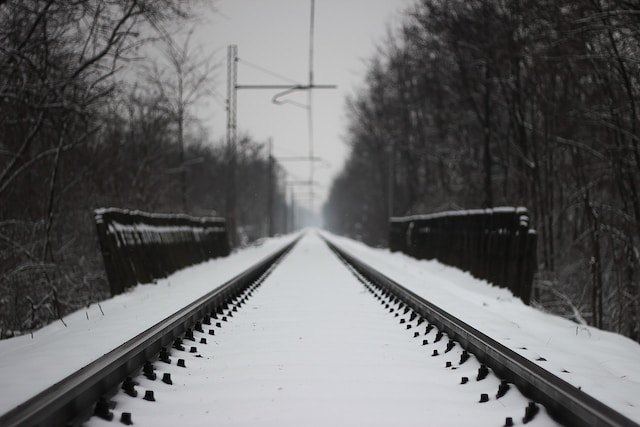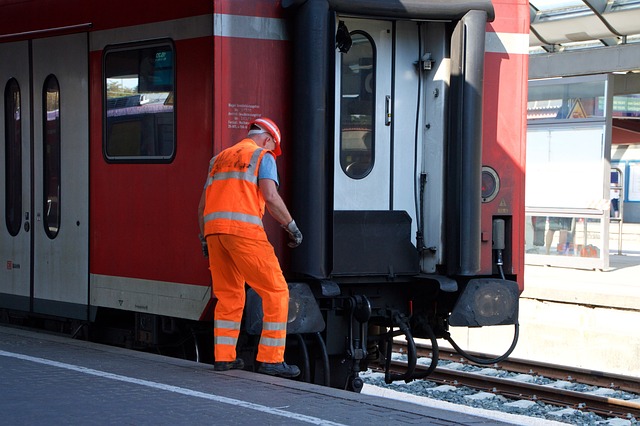
It was not that long ago that asbestos could be found just about everywhere in the railroad industry. Some examples of asbestos use on the nation’s railroads have been covered in other blogs about asbestos rope, signal boxes, and locomotives. This blog will focus specifically on asbestos use at the Union Pacific Railroad (UPRR). The Doran and Murphy Law Firm has been involved in Asbestos Cancer Lawsuits and Railroad Cancer Lawsuits since the 1990s. Over the years we have uncovered literally thousands of documents that confirm that asbestos was used all over the Union Pacific Railroad system. Some of the most common examples of where asbestos was found on the railroad are:
Asbestos Rope: The Union Pacific Railroad used asbestos rope to fix broken rail, also known as “pull parts.” An Instruction Bulletin issued by the Union Pacific Chief Engineer in 1978 noted that the “preferable method of adjusting rail strings is to apply heat to the rail by igniting oil-soaked asbestos rope placed against the rail web for a distance of approximately 75 feet each side of the joint. . .Each section and maintenance gang located in continuous welded rail territories shall maintain a 150-ft supply of one-inch pure asbestos rope, and each signal maintainer shall maintain a 75-ft supply for use in adjusting wide joints or repairing pull-aparts.” These asbestos rope exposures put railroad track workers and signal maintainers at risk for cancer. Asbestos rope was also used by the Union Pacific to repair boilers which put mechanical forces such as pipefitters, steamfitters and bridge and building workers in danger of asbestos cancer and disease.
Asbestos on Locomotives: Asbestos was widely used in manufacturing diesel locomotives from the 1950s until the 1980s, specifically in (1) pipe insulation on cab heater hot water lines and air compressor discharge lines, (2) brake shoes, (3) gaskets, (4) steam generators, and (5) electrical components such as arc chutes and dynamic brake cooling grids. The use of asbestos on locomotives in these places put engineers, firemen, conductors, brakemen, locomotive machinists, locomotive electricians, and pipefitters at risk for cancer. Unfortunately, the Union Pacific Railroad did not have any formal abatement program for locomotives until the 1990s, many decades after it first learned about the cancer hazards of asbestos. Nor did the railroad provide respiratory protection to the men and women who operated and rode on these trains day in and day out.
Asbestos in Buildings, Crew Rooms, Locker Rooms, Yard Offices, and Repair Shops: Asbestos could be found in any railroad yard or shop on the Union Pacific Rairload System. Internal documents confirm its use in asbestos vinyl floor tile, acoustic ceiling tile, boilers, drywall, joint compound, transite walls, siding, roofing materials, and pipe insulation. These sources of exposure created lifelong cancer risks for all the railroad workers who used these facilities, regardless of their craft. Thankfully much of this asbestos has now been removed as a result of the threat of railroad cancer lawsuits.
Asbestos on Rail Cars, Bunk Cars and Cabooses: Asbestos sheets were used as “heat shields” on caboose walls around the stoves and in brake shoes on rail cars until the 1980s. The major manufacturers of asbestos-containing brake shoes were Cobra, Comet and Anchor. Many of our clients have described the huge clouds of dust that would be released when the train brakes were applied. These sources of exposure put railroad brakeman, conductors, track workers and carman at risk for getting cancer.
Asbestos in Signal Houses: A document written by the Union Pacific Chief Engineer dated May 27, 1983, found that asbestos was widely used (1) in transite boards in signal and instrument houses, (2) to insulate ties around switch heaters, (3) in 90% of all aerial cable, and (4) asbestos fiber was mixed with signal cement to seal instrument cases and signal houses. The use of asbestos in these places meant that Union Pacific signal workers, signal maintainers and signalmen would be at risk for cancer for many decades, even long after they retired from the railroad.
These are just some of the examples of where asbestos could be found on the Union Pacific Railroad. Unfortunately, the railroad allowed asbestos to remain in locomotives, rail cars and buildings across the system for decades after learning in 1958 from a railroad trade group that asbestos was highly toxic and could cause cancer. By not educating its workers about the hazards of asbestos and failing to provide workers with proper respiratory equipment, the railroad put lives at risk.
The lawyers at Doran and Murphy, PLLC, have been recognized national railroad cancer lawyers since the 1990s. If you or a loved one has cancer and worked on the railroad, call us at 1-800-374-2144 for a free consultation today!





